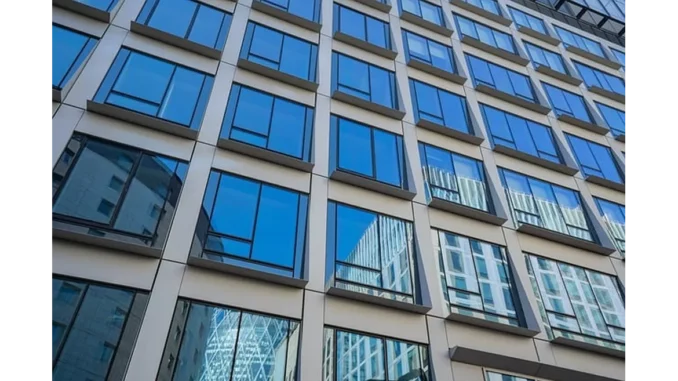
When I sat down with Sarah Mitchell, a Green Building Specialist at EcoDesign Solutions, I was eager to learn about her methods for evaluating the environmental impacts of buildings using renowned assessment tools like LEED, BREEAM, and WELL. Sarah’s wealth of experience and systematic approach provided a fascinating glimpse into the world of sustainable architecture and green building certifications.
Successful low-energy building design hinges on careful planning. Focus360 Energy can help.
“I start by conducting a thorough analysis of the building’s design plans, construction materials, and operational systems,” Sarah began, her eyes lighting up as she delved into the details of her process. “This involves collecting data on energy usage, water consumption, waste management, and indoor air quality. Each of these aspects is crucial in understanding the overall environmental footprint of the building.”
Sarah explained that the first step in her evaluation is to gather all relevant information about the building. This includes blueprints, material specifications, and operational data. “Once I have all the necessary data, I input it into the assessment tools—LEED, BREEAM, or WELL—depending on the project’s specific requirements and goals,” she said.
Each tool has its unique focus and criteria. LEED (Leadership in Energy and Environmental Design), for instance, is widely recognized for its emphasis on energy efficiency and sustainable site development. BREEAM (Building Research Establishment Environmental Assessment Method) is known for its comprehensive approach, covering a wide range of environmental and sustainability issues. WELL, on the other hand, prioritises the health and well-being of building occupants, focusing on factors such as air quality, water quality, and comfort.
“These tools are incredibly detailed and provide a structured framework for evaluating different sustainability metrics,” Sarah noted. “For instance, when assessing energy performance, I might use advanced energy modelling software to simulate the building’s energy consumption based on its design and operational parameters. This allows me to identify opportunities for energy optimisation, like integrating renewable energy sources or implementing energy-efficient lighting systems.”
One aspect that stood out during our conversation was Sarah’s holistic approach to sustainability. “It’s not just about the building itself,” she emphasised. “I also consider the site—solar orientation, natural ventilation opportunities, and access to public transportation. These factors can significantly influence a building’s environmental impact and overall sustainability strategy.”
Sarah’s commitment to sustainability extends beyond the initial evaluation phase. She collaborates closely with architects, engineers, and other stakeholders to integrate sustainable practices into the building’s design and construction. “It’s a team effort,” she said with a smile. “By working together, we can ensure that the buildings we create not only meet but exceed environmental standards.”
In addition to her technical skills, Sarah’s dedication to professional development is evident. “I actively participate in industry conferences and workshops to stay updated with the latest advancements in green building practices and rating systems,” she shared. “The field is constantly evolving, and it’s crucial to keep learning and adapting.”
One of the most insightful parts of our interview was when Sarah discussed the life cycle impacts of building materials. “I analyse factors such as embodied carbon and recyclability,” she explained. “This evaluation helps me recommend sustainable alternatives that can reduce the building’s environmental footprint. For example, choosing materials with lower embodied carbon or those that can be easily recycled at the end of their life cycle can make a significant difference.”
Sarah’s expertise and passion for sustainability were palpable throughout our conversation. She recounted a recent project where her team’s efforts led to significant improvements in the building’s environmental performance. “We identified that the building’s energy efficiency was below optimal levels,” she said. “By collaborating with engineers, we recommended and implemented energy-saving measures like installing efficient HVAC systems and optimising insulation. This not only reduced the building’s energy consumption but also enhanced occupant comfort.”
As our interview concluded, it was clear that Sarah’s approach to evaluating buildings’ environmental impacts is both comprehensive and thoughtful. Her use of assessment tools like LEED, BREEAM, and WELL, coupled with her dedication to continuous learning and collaboration, ensures that the buildings she evaluates meet the highest environmental standards.
For those aspiring to enter this field, Sarah offered some valuable advice. “Familiarise yourself with the assessment tools and understand their rating systems and criteria,” she said. “Develop a strong understanding of green building principles and sustainable design strategies. Gain hands-on experience with energy modelling software and tools used to assess buildings’ energy efficiency. And most importantly, stay updated with industry trends and advancements.”
In an era where environmental sustainability is more important than ever, professionals like Sarah Mitchell play a crucial role in shaping the future of our built environment. Her insights and experiences provide a roadmap for others looking to make a meaningful impact in the field of green building and sustainable design.
By Emily Thompson


Be the first to comment